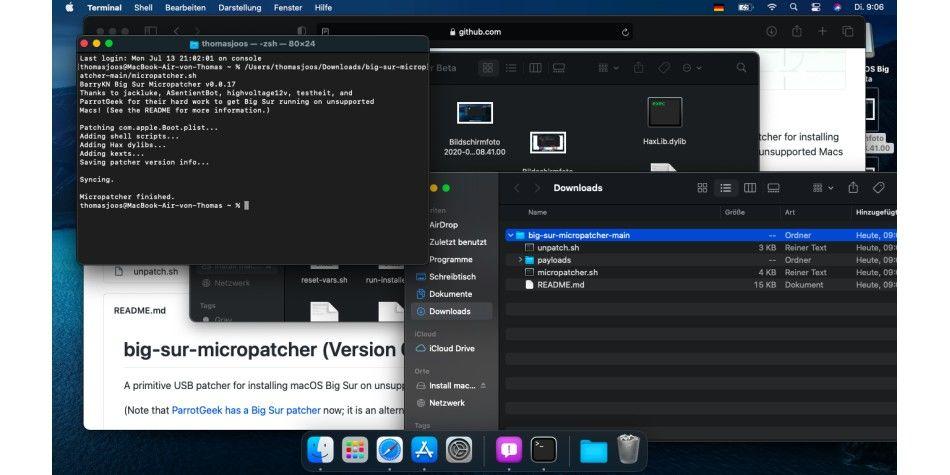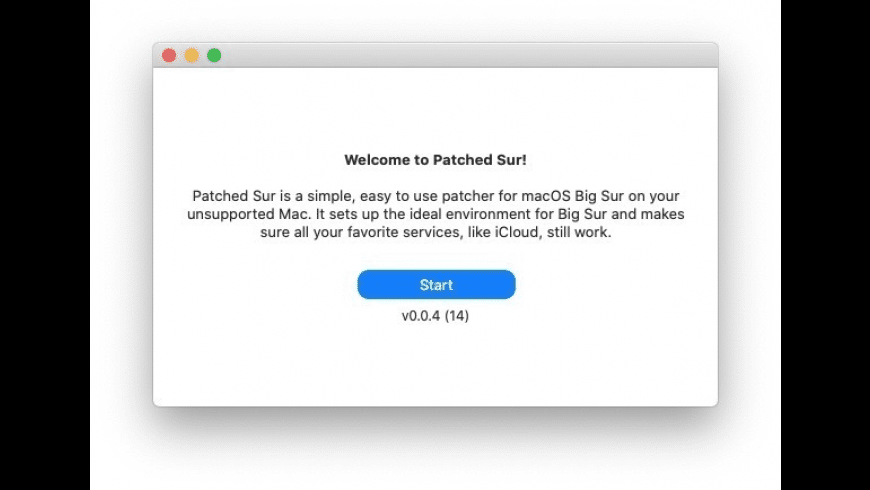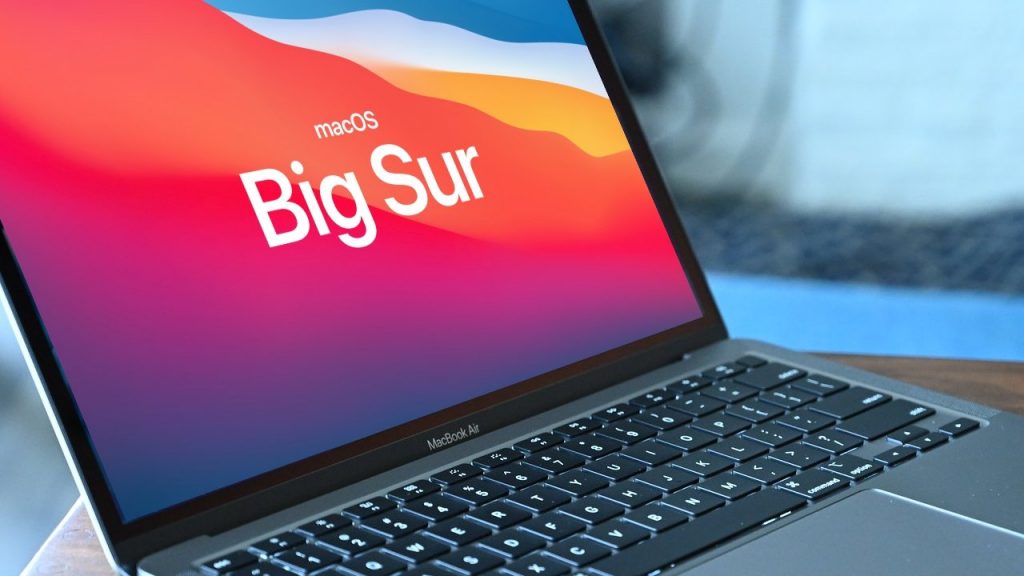Running Big Sur on another macOS on an unsupported Mac may also be considered against Apple's terms and conditions. For information about Apple's terms and conditions read: Should you agree to.
- Imac Late 2013 Big Sur
- Install Macos Big Sur On Unsupported Mac Github
- Macos 11 Big Sur On Unsupported Macs
Unsupported Macs supported by ‘Patched Sur’ First of all, make sure that your Mac is not in the official macOS Big Sur list of compatible Macs.At the time of writing, the following Macs are. MacOS Big Sur on MacBook Pro Late 2012 A1425 (Unsupported Mac) Old Macs. Posted by u/deleted 11 months ago.
- The official version of macOS Big Sur is released
macOS Big Sur brings the combination of powerful strength and beautiful appearance to a new level. The carefully crafted new design allows you to fully experience the charm of the Mac; the Safari browser is ushered in a major update, waiting for you to enjoy; the map app and the information app are loaded with new functions for you to explore; more transparent privacy permissions, protection More thoughtful.
macOS Big Sur 11 release date: 2020.11.12 - Unsupported models and problems
According to the summary of macrumors, unsupported Macs can be divided into several situations:
Mac models that officially support macOS Catalina but are not supported by macOS Big Sur:
– These Macs can run Big Sur normally, but Wi-Fi cannot work normally. (This type of model is the easiest to run Big Sur perfectly through the patch, currently it is only a Wi-Fi problem.)
You can follow the steps below, this article is mainly for this type of model.
2012 and Early 2013 MacBook Pro
Not officially supported in macOS Catalina, but are fully capable of running both Catalina and large Sur with a Metal-compatible GPU and upgraded Wifi/BT card. Mac can be patched to run macOS Catalina normally, and it may be patched to run macOS Big Sur: – These Macs can currently launch Big Sur, but there is currently no Wifi or graphics acceleration support. This type of model requires additional steps to solve installation problems. Early-2008 or newer Mac Pro, iMac, or MacBook Pro: MacPro3,1
Macmini5,x (systems with AMD Radeon HD 6xxx series GPUs were almost unusable when running Catalina and will be under Big Sur as well.)
MacBook5,2
Xserve3,1*
*Not officially supported in macOS Catalina, but are fully capable of running both Catalina and large Sur with a Metal-compatible GPU and upgraded Wifi/BT card.
Completely unsupported Mac:
This type of model does not need to consider installing Big Sur.
Macmini2,1
— The 2007 iMac 7,1 is compatible with Catalina and potentially Big Sur if the CPU is upgraded to a Penryn-based Core 2 Duo, like a T9300.
2006-2008 MacBooks:
MacBook4,1 (as with Mojave and Catalina, we’ll get on our own here, but Big Sur are going to be running on this machine!)
2008 MacBook Air (MacBookAir 1,1)
All PowerPC-based Macs
All 68k-based Macs - Download macOS Big Sur
Mac App Store
Open the App Store and directly search for macOS to download.
After the download is complete, you can see that Install macOS Big Sur is located in the application (Application) directory.
Baidu SkyDrive DMG Mirror
Please visit: https://sysin.org/article/macOS-Big-Sur/
After downloading, double-click to open the dmg file, and drag Install macOS Big Sur to the application (Application). - Patch Tool Download
(1) Hax.dylib: link 1
(2) big-sur-micropatcher - Installation method: new installation or upgrade installation under the current system
(0) Prerequisites
Make sure the Mac is currently running on macOS Catalina.
(1) Boot to recovery mode (recovery mode)
When booting or restarting, press and hold Command + R until the splash screen (Apple logo) appears.
If there is no recovery partition, you need to press Command + Option + R to start Internet Recovery.
(2) Disable sip (System Integrity Protection)
Utilities -> Terminal Enter the command csrutil disable and press enter.
(3) Disable compatibility check
Continue to execute commands in the terminal:
1
nvram boot-args=”-no_compat_check”
(4) Restart, start macOS Catalina normally
(5) Disable libraries validation
Open the terminal and execute the command:
1
sudo defaults write /Library/Preferences/com.apple.security.libraryvalidation.plist DisableLibraryValidation -bool true
(6) Insert library
Put the downloaded Hax.dylib file in the home directory, namely /Users// directory, and execute the command in the terminal:
1
launchctl setenv DYLD_INSERT_LIBRARIES $PWD/Hax.dylib
(7) Start to install macOS Big Sur
Clean install
Before starting the installation, we open the “Disk Utility” to create a new APFS volume, and then double-click Install macOS Big Sur in the application to start the installation. Select the newly created volume as the target disk. After the installation is complete, it will automatically boot to the new system.
After installation, you can delete the APFS volume where the original system is located, leaving only the Big Sur system.
Upgrade installation
Double-click Install macOS Big Sur in the application to start the normal installation. The installation target partition selects the partition where the current system is located, that is, the upgrade installation is performed automatically.
By default, the factory setting has only one partition named: Macintosh HD
(8) Solve the problem of network card driver
In some models, the wireless network card is already working (Late 2013 iMac, or your 2012/2013 model uses an 802.11ac network card instead of an 802.11n network card).
If the wireless network card cannot work, you need to deal with it as follows:
You need to use the method in item 7 below to create a bootable U disk. Restart the system, hold down the Option key until the boot partition selection screen appears, boot to “Install macOS Big Sur”, after booting, select “Utilities -> Terminal” and execute the following commands (three formats) Both can be supported, choose one of them, “Macintosh HD” is your default system installation partition name, replace it according to the actual name):
1
2
3
/Volumes/Image Volume/patch-kexts.sh /Volumes/Macintosh HD
‘/Volumes/Image Volume/patch-kexts.sh”/Volumes/Macintosh HD’
“/Volumes/Image Volume/patch-kexts.sh” “/Volumes/Macintosh HD”
Then restart to macOS Big Sur, at this time Wi-Fi is already normal. - Installation method: fresh installation using removable media
Tip: U disk can also be replaced by mobile hard disk, especially SSD mobile hard disk, which is faster.
7.1, create boot media
(1) Create a bootable U disk
Prepare a 16G or above U disk, open “Utilities> Disk Utility”, select the U disk, click “Erase”, the format is as follows:
Mac OS X extension (Journaled);
GUID partition map;
Partition name: MyVolume (The default is Untitled, which can be customized. Note that MyVolume in the terminal command below should also be changed to the same name you customized)
Open the terminal and execute the following command:
1
sudo /Appli
macOS 11 Big Sur is an advanced Macintosh operating system that you can install on your Mac. It has got tons of new features to enhance the user experience, like making safari browser 50% faster, new features of messages, Air Pods improvements, new-design sidebar in mail and photos, widgets in the notification bar, and many more.
Patched Sur is intended to have Big Sur run on unsupported Macs so that’s sort of a separate issue (though I’m sure they can have wi-fi problems since it’s not supported hardware), whereas most wi-fi issues with Big Sur are fortunately resolved with the steps outlined in this tutorial to create a new configuration. MacOS Big Sur 11 release date: 2020.11.12; Unsupported models and problems According to the summary of macrumors, unsupported Macs can be divided into several situations: Mac models that officially support macOS Catalina but are not supported by macOS Big Sur: – These Macs can run Big Sur normally, but Wi-Fi cannot work normally.
Apple announced this new software on 22 June at WWDC. And this time, Apple did a big challenge and released the macOS 11 Big Sur along with iOS 14, iPadOS 14, tvOS 14, and watchOS 7. Meanwhile, Apple highlighted all the new features, changes, and improvements to the current software. You can download this new operating system from various sources now. Unfortunately, some Macs can't receive macOS 11 Big Sur update and they can't install the new operating system. In this article, we will discuss how to install macOS 11 Big Sur on an Unsupported Mac with easy steps.
Part 1: Official List of Big Sur Supported Mac Models
macOS 11 Big Sur Developer Beta is available to download. But you have to check your Mac compatibility first. If you have the below-listed Macs then you don't have to install macOS 11 Big Sur as these models will receive an update for macOS Big Sur automatically.
- MacBook 2015 and later
- MacBook Air and Pro Late 2013 and later
- Mac mini 2014 and later
- iMac 2014 and later
- iMac Pro 2017 and later (all models)
- Mac Pro 2013 and later
Part 2: Unsupported Mac Models of Big Sur (Not Eligible for Direct Upgrade)
On the other hand, if you have the below-listed Mac computers then you can install macOS Big Sur on those models as they are unsupported officially. You have to do some hacks to let Big Sur running on unsupported Macs.
- MacBook Air 2012
- MacBook Pro 2012 and Early 2013 MacBook Pro
- 2012 Mac Mini
- 2012 and 2013 iMac
Part 3: How to Install macOS Big Sur on an Unsupported Mac
Before the installation, make sure that you take a backup of your Mac on an external hard disk as you will lose all your data when you install the new operating system. There are several backup software like Time Machine, iCloud, Dropbox, and many more. Once you have taken a backup follow the instructions below to install macOS Big Sur on your unsupported Mac.
Step 1: First you need to download two files from the links below to complete the macOS 11 Big Sur installation on your unsupported Mac.

- macOS Big Sur PKG installer: https://developer.apple.com/macos/
- macOS Big Sur PKG install hack: https://forums.macrumors.com/simple-installer-hack-zip.926156/
Step 2: After you have downloaded these two files, unzip the hack and copy the hax.dylib file and then paste it to home folder.
Step 3: Click on Install Assistant.pkg to install required contents to your Mac. Make sure that you have enough space on your hard disk as the file will take 20.1 MB size on your computer.
Step 4: Now go ahead and tap on the Install button to install the software on the disk 'Macintosh SSD'. Once you click the 'Install' button then it will ask you to enter your password. Next, click the 'Install Software' button.
Step 5: Next, you have to boot your computer into Recovery mode. You can do that by pressing Command + R immediately on startup until Recovery option appears. In case if you have no recovery partition, you can press down Command + Option +R to get into Internet Recovery. After that, go to Utilities -> Terminal and type 'csrutil disable', followed by pressing the Enter button on your keyboard.
Step 6: Type the following two commands in the terminal. Once you apply the first command, type your login password, and then input the second command.
sudo defaults write /Library/Preferences/com.apple.security.libraryvalidation.plist DisableLibraryValidation -bool true
launchctl setenv DYLD_INSERT_LIBRARIES $PWD/Hax.dylib

Step 7: Next, run the macOS 11 Big Sur installer app that you installed from InstallAssistant.pkg a while ago. Now click on the 'Continue' button and follow the instructions to complete the installation process.
Step 8: The installation will take about 30 minutes approximately. Once the installation is successful you will see the macOS 11 Big Sur wallpaper on your Mac screen. That's it, you have installed macOS Big Sur on your unsupported Mac successfully.

Follow the above-mentioned method to install macOS 11 Big Sur on unsupported Mac devices. The method is quite easy; you just have to focus on the command line and other installation procedures.
Part 4: Alternative Method to Install Big Sur on an Unsupported Mac
The above tutorial is for users who still have access to their device. However, if your Mac is unable to boot into Desktop or you are using a Hackintosh, then you should follow the alternative method instead. In this part, we will show you how to create a macOS Big Sugr bootable USB on a Windows PC and install macOS Big Sur on unsupported Mac by using that bootable media.
Step 1: Make a full backup of important files on your Mac.
Step 2: Download a copy of UUByte DMG Editor and follow the instructions to install it on your Windows PC.
Step 3: Insert a USB flash drive into PC and open UUByte DMG Editor. Now, click the Burn tab to get into the new window.
Step 4: You will see three options on Burn windows. Please import macOS Big Sur DMG file into the program and choose the USB drive name. You can also set a new name for that USB drive. And this is optional.
Step 5: Once the setting process is completed, just click 'Burn' button located at the bottom to start burning dmg file to USB on your PC. You should wait about 10 minutes for this task.
Step 6: Plug Big Sur bootable USB on your Mac and press Power + Option combine keys to open Startup Manager. At this stage, you are able to select a booting device. Click on the USB drive and start Big Sur installation process.
This part is mainly for Windows users who want to install Big Sur on an unsupported Mac. The most important step is to create a bootable USB drive.
Troubleshooting:

If your system is showing any error message while installing the macOS Big Sur you can try these methods to fix it.
Imac Late 2013 Big Sur
- Restart your Computer and continue with the installation.
- Make sure that your Mac’s date and time is correct.
- Check your Hard Drive to see that you have enough free space to carry out the installation.
- Make sure that the version of macOS Big Sur is up to date including the macOs installer
- Run first aid on your startup disk before installing macOS Big Sur to check any system files are damaged or not.
Summary
Install Macos Big Sur On Unsupported Mac Github
Macos 11 Big Sur On Unsupported Macs
You can see that it is not hard to install macOS Big Sur on an Supported Mac. Make sure that you key in the right command lines which are mentioned above, as typing a wrong command can harm your system. Enjoy the great features that come with the macOS Big Sur on your unsupported device!